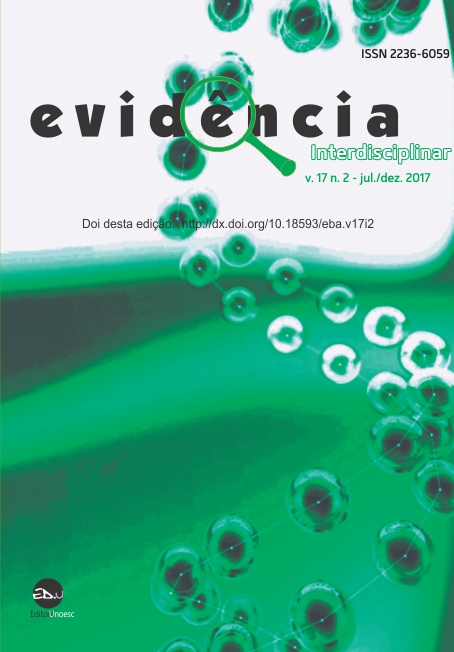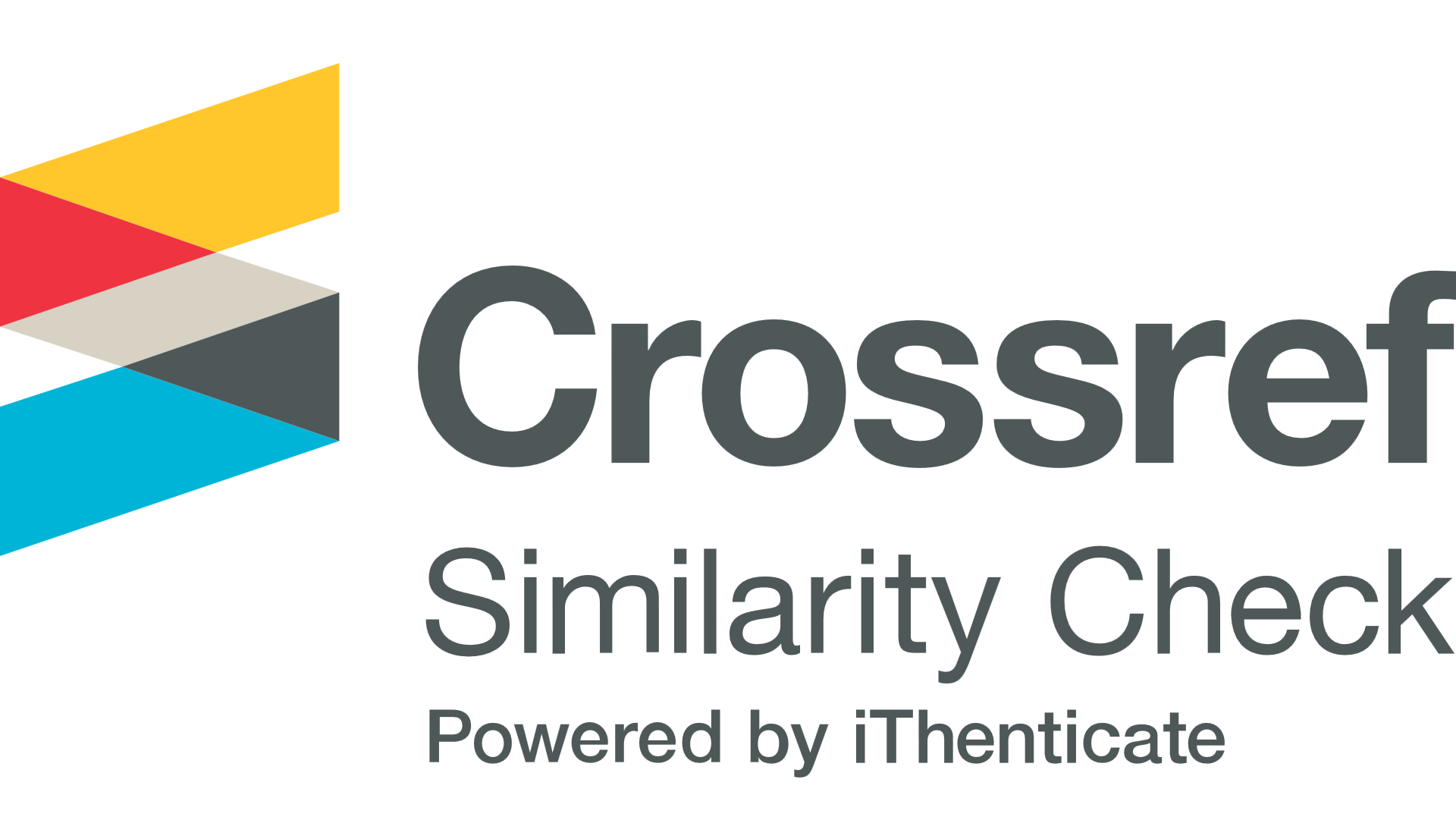Produção biotecnológica de produtos de valor agregado utilizando glicerol residual proveniente da síntese de biodiesel
DOI:
https://doi.org/10.18593/eba.v17i2.15411Palavras-chave:
Palavras-chave, microrganismos, biodiesel, meio ambiente, transesterificação, sustentabilidade, fermentação de glicerolResumo
O aumento significativo na produção de biodiesel por transesterificação de óleos comestíveis e não comestíveis causaram excedente de glicerol no mercado. Com suas características, estrutura química única, renovabilidade e biodisponibilidade, o glicerol tem promissor potencial para ser transformado em produtos químicos de alto valor agregado. Este artigo oferece uma análise abrangente e crítica do tratamento biotecnológico do glicerol a 1,3-propanodiol e 2,3-butanodiol. A conversão microbiana do glicerol apresenta vantagens em relação às sínteses químicas requerendo menor número de etapas, temperaturas medianas e pressão do ambiente, além de não gerar intermediários tóxicos.
Palavras-chave: Micro-organismos. Biodiesel. Transesterificação. Fermentação de glicerol.
Downloads
Referências
REFERÊNCIAS
LIU, B., CHRISTIANSEN, K., PARNAS, R., XU, Z. and LI, B. “Optimizing the production of hydrogen and 1,3propanediol in anaerobic fermentation of biodiesel glycerol” Int. J. Hydrogen Energy, vol. 38, no. 8, pp. 3196–3205, 2013.
KNOTHE, J., VAN-GERPEN, G., PEREIRA, J., KRAHL, L. Manual de biodiesel. 2006.
USEIA, “International Energy Statistics,”p. 2016, 2016.
S. HIRSCHMANN, K. BAGANZ, I. KOSCHIK, and K.-D. VORLOP, “Development of an integrated bioconversion process for the production of 1,3-propanediol from raw glycerol waters,” Landbauforsch. Volkenrode, vol. 55, pp. 261–267, 2005.
BALAT M. and BALAT, H. “Progress in biodiesel processing,” Appl. Energy, vol. 87, no. 6, pp. 1815–1835, 2010.
GOEMBIRA, F., MATSUURA, K. and SAKA, S. “Biodiesel production from rapeseed oil by various supercritical carboxylate esters,” Fuel, vol. 97, pp. 373– 378, 2012.
JOHNSON, L. e REHMANN, E.E. “The role of 1,3-propanediol production in fermentation of glycerol by Clostridium pasteurianum . PubMed Commons, pp. 1–7, 2016.
KUHN, J., MÜLLER, H., SALZIG, D. and CZERMAK, P. “A rapid method for an offline glycerol determination during microbial fermentation,” Electron. J. Biotechnol., vol. 18, no. 3, pp. 252–255, 2015.
DINH, N.T., HATTA, K., KWON, S.H, ROLLON, A.P., and NAKASAKI, K.“Changes in the microbial community during the acclimation stages of the methane fermentation for the treatment of glycerol,” Biomass and Bioenergy, vol. 68, pp. 240–249, 2014.
SHAHID E.M. and JAMAL, Y. “Production of biodiesel: A technical review,” Renew. Sustain. Energy Rev., vol. 15, no. 9, pp. 4732–4745, 2011.
LANE, J. “Biofuels mandates around the world,” 2014.
BP, “BP Statistical Review of World Energy About this review Contents,”Br. Pet., no. June, pp. 1–48, 2013.
TABOSA, M., SOARES, L. and SAAVEDRA, G. “Utilização do glicerol como fonte de carbono em fermentação submersa,” XVII Simpoósio Nac. Bioprocessos, p. 7, 2009.
DHARMADI Y., MURARKA, A. and GONZALEZ, R. “Accelerated Publication Anaerobic Fermentation of Glycerol by Escherichia coli: A New Platform for Metabolic Engineering,” Methods, vol. 94, no. 5, pp. 5–6, 2006.
ATAPOUR, M. and KARIMINIA, H.R. “Characterization and transesterification of Iranian bitter almond oil for biodiesel production,” Appl. Energy, vol. 88, no. 7, pp. 2377–2381, 2011.
ROMIO, T., HARTMANN, C., VIAPIANA, F., MENEGHEL, L., CARRA, S., TORRES, A.P., SOUSA, M.P., BEAL, L.L., MALVESSI, E. “Cultivo de Klebsiella oxytoca em glecerol para produção de 2,3-butanodiol em biorreator de bancada,” XX Congresso Brasileiro de Engenharia Química. Anais do XX Congresso Brasileiro de Engenharia Química, Florianópolils, pp. 1–7, 2014.
JI, X., HUANG, H., ZHU, J., REN, L., NIE, Z., DU, J. and LI, S. “Engineering Klebsiella oxytoca for efficient 2, 3-butanediol production through insertional inactivation of acetaldehyde dehydrogenase gene,” Appl Microbiol Biotechnol, vol. 85, no. 6, pp. 9637–9646, 2010.
CHALZFRAKOU, A and PAPANIKOLAU, S. “Effect of impurities in biodiesel-derived waste glycerol on the performance and feasibility of biotechnological processes.,” vol. 97, no. 22, pp. 9637–9646, 2015.
K. TRCHOUNIAN and A. TRCHOUNIAN, “Hydrogen production from glycerol by Escherichia coli and other bacteria: An overview and perspectives,” Appl. Energy, vol. 156, pp. 174–184, 2015.
G. MEESTERS, P., HUIJBERTS, G., EGGINK, “High cell density cultivation of the lipid accumulating yeast Cryptococcus curvatus using glycerol as a carbono source,” vol. 45, pp. 575–579, 1996.
ANITHA, M., KAMARUDIN, S.K., and KOFLI, N.T. “The potential of glycerol as a value-added commodity,” Chem. Eng. J., vol. 295, pp. 119–130, 2016.
CLAUS M. L. Æ. P., “Production of BiomassDerived Chemicals and Energy : Chemocatalytic Conversions of Glycerol,” vol. 52, no. 3, pp. 278–287, 2009.
U. BUREAU, “Glycerol Imports and Exports,” vol. 2016, pp. 1–2, 2016.
HAAS M. J., MCALOON A. J., YEE W. C., and FOGLIA T. A. “A process model to estimate biodiesel production costs,” Bioresour. Technol., vol. 97, no. 4, pp. 671–678, 2006.
SZYMANOWSKA-POWAŁOWSKA, D. “1,3-Propanediol production from crude glycerol by Clostridium butyricum DSP1 in repeated batch,” Electron. J. Biotechnol., vol. 17, no. 6, pp. 322–328, Nov. 2014.
PFULGL M., MARX S., MATTANOVICH H., SAUER D. “1,3 Propanediol production from glycerol with Lactobacillus diolivorans.,” 2012.
KAUR G., SRIVASTAVA A. K., and CHAND, S. “Advances in biotechnological production of 1,3propanediol,” Biochem. Eng. J., vol. 64, pp. 106–118, 2012.
QUISPE J. R., CORONADO C.A.G, CARVALHO, C.J.R. “Glycerol: Production, consumption, prices, characterization and new trends in combustion,” Renew. Sustain. Energy Rev., vol. 27, pp. 475–493, 2013.
HERMANN. B. G and PATEL M., “Today’s and tomorrow's bio-based bulk chemicals from white biotechnology: a techno-economic analysis.,” Appl. Biochem. Biotechnol., vol. 136, no. 3, pp. 1–6, 2007.
RIPOLL, V., VICENTE, G., MORÁN, B., ROJAS, A., SEGARRA, S., MONTESINOS, A., TORTAJADA, M., RAMÓN, D., LADERO, M. and SANTOS, V.E. “Novel biocatalysts for glycerol conversion into 2,3-butanediol,” Process Biochem., vol. 51, no. 6, pp. 740–748, 2016.
CELIŃSKA, E., and GRAJEK, W. “Biotechnological production of 2,3-butanediol-current state and prospects.,” Biotechnol. Adv., vol. 27, no. 6, pp. 715–25, Jan. 2009.
ROMIO, T. “Produção de 2,3-butanodiol a partir de glicerol por Klebsiella oxytoca ATCC8724. ” Dissertação. Mestrado em Biotecnologia- Universidade de Caxias do Sul, 2014, Caxias do Sul, p. 74, 2014.
ZHANG, L., YANG, Y., SUN, J., SHEN, Y., WEI, D., ZHU, J. and CHU, J. “Microbial production of 2,3-butanediol by a mutagenized strain of Serratia marcescens H30.,” Bioresour. Technol., vol. 101, no. 6, pp. 1961–7, Mar. 2010.
GARG, S.K., and JAIN, A. “Fermentative production of 2,3-butanediol: A review,” Bioresour. Technol., vol. 51, no. 2–3, pp. 103– 109, Jan. 1995.
MARIOTTO, J.R. “Produção de acetoína e 2,3-butanodiol por Bacillus polymyxa Produção de acetoína e 2,3-butanodiol por Bacillus polymyxa.” 77f. Dissertação (Mestrado em Engenharia de Alimentos). Departamento de Engenharia de Alimentos. Universidade Federal de Santa Catarina, Florianópolis, 2007, Florianópolils, p. 77, 2007.
PEREGO, P., CONVERTI, A. and Del BORGHI, M. “Effects of temperature, inoculum size and starch hydrolyzate concentration on butanediol production by Bacillus licheniformis,” Bioresour. Technol., vol. 89, no. 2, pp. 125–131, 2003.
NEWSWIRE, P.R. “Global 1,4-Butanediol, 2,3-Butanediol and 1,3-Butadiene Markets are Expected to reach 2,357.3 kilo tons, 74.4 kilo tons and 14,799.3 kilo tons respectively in 2018: Transparency Market Research,” Transparency Market Research, 2012.
QIN, J., XIAO, Z., MA, C., XIE, N., LIU, P., and XU, P. “Production of 2,3-Butanediol by Klebsiella Pneumoniae Using Glucose and Ammonium Phosphate,”Chinese J. Chem. Eng., vol. 14, no. 1, pp. 132–136, Feb. 2006.
WANG, A., WANG, Y., JIANG, T., LI, L., MA, C., and XU, P. “Production of 2,3-butanediol from corncob molasses, a waste by product in xylitol production,” Appl Microbiol Biotechnol., vol. 87, no. 22, pp. 9637–9646, 2010.
PETROV, K., and PETROVA, P. “High production of 2,3-butanediol from glycerol by Klebsiella pneumoniae G31,” Appl Microbiol Biotechnol., vol. 84, no. 4, pp. 659– 665, 2009.
ZHANG, L., SUN, J., HAO, Y., ZHU, J., CHU, J., WEI, D., and SHEN, Y. “Microbial production of 2,3-butanediol by a surfactant (serrawettin) deficient mutant of Serratia marcescens H30.,” J Ind Microbiol Biotechnol, vol. 37, no. 8, pp. 857–62, 2010.
GAO, J., XU, H., LI, Q., FENG, X. and LI, S. “Optimization of medium for one-step fermentation of inulin extract from Jerusalem artichoke tubers using Paenibacillus polymyxa ZJ-9 to produce R,R-2,3butanediol,” Bioresour. Technol., vol. 101, no. 18, pp. 7076–7082, 2010.
JI, X.J., HUANG, H. and OUYANG, P.K. “Microbial 2,3-butanediol production: a state-of-the-art review.,” Biotechnol. Adv., vol. 29, no. 3, pp. 351–64, Jan 2011.
MAGEE, R.J., and KOSARIC, N. “The Microbial Production of 2,3-Butanediol, vol. 32. Elsevier, 1987.
BRISSE, S., GRIMONT, F. and GRIMONT, P.D. “The Genu s Klebsiella Taxonomic History and Structure,”The Prokaryotes, pp. 159–196, 2006.
SILVA, G.P., CONTIERO, J., ÁVILA NETO, P.M., and LIMA, C.J.B. “1,3-Propanediol: production, applications and biotechnological potential,” Quim. Nova, vol. 37, no. 3, pp. 527–534, 2014.
RIPOLL, V., VICENTE, G., MORÁN, B., ROJAS, A., SEGARRA, S., MONTESINOS, A., TORTAJADA, M., RAMÓN, D., LADERO, M., and SANTOS, V.E. “Novel biocatalysts for glycerol conversion into 2,3-butanediol,” Process Biochem., vol. 51, no. 6, pp. 740–748, Mar. 2016.
CHO, S., KIM, T., WOO, H.M., KIM, Y., LEE, J., and HUM, Y. “High production of 2,3-butanediol from biodiesel-derived crude glycerol by metabolically engineered Klebsiella oxytoca M1,” Biotechnol Biofuels., vol. 8, pp. 1–12, 2015.
METSOVITI M., PARAMITHIOTIS, S., DROSINOS, E.H., GALIOTOU-PANAYOTOU, M., NYCHAS, G.J.E., ZENG, A.P., and PAPANIKOLAOU, S. “Screening of bacterial strains capable of converting biodiesel-derived raw glycerol into 1,3propanediol, 2,3-butanediol and ethanol,” Eng. Life Sci., vol. 12, no. 1, pp. 57–68, 2012.
YANG, T., RAO, Z., ZHANG, X., XU, M., XU, Z., and YANG, S. “Fermentation of biodiesel derived glycerol by Bacillus amyloliquefaciens : effects of co substrates on 2 , 3 butanediol production,” Appl Microbiol Biotechnol., vol. 97, no. 17, p. 23797331, 2013.
CHENG, K., WU, J., WANG, G., LI, W., FENG, J. and ZHANG, J. “Effects of pH and dissolved CO 2 level on simultaneous production of 2 , 3-butanediol and succinic acid using Klebsiella pneumoniae,” Bioresour. Technol., vol. 135, pp. 500–503, 2013.
ZENG, A.P., ROSS, A., BIEBL, H., TAG, C., GUNZEL, B., and DECKWER, W.D.“Multiple Product Inhibition and Growth Modeling of Clostridium-Butyricum and Klebsiella-Pneumoniae in Glycerol Fermentation,” Biotechnol. Bioeng., vol. 44, no. 8, pp. 902–911, 1994.
SILVA, G.P., MACK, M. and CONTIERO, J. “Glycerol: A promising and abundant carbon source for industrial microbiology,” Biotechnol. Adv., vol. 27, no. 1, pp. 30–39, 2009.
SAHA, B. and BOTHAST, R. “Production of 2 , 3 butanediol by newly isolated Enterobacter cloacae,” Appl. Microbiol. Biochnol., vol. 52, no. 3, p. 10531643, 1999.
Downloads
Publicado
Como Citar
Edição
Seção
Licença
Declaração de Direito Autoral
Os autores mantêm os direitos autorais e concedem à Revista o direito de primeira publicação, com o trabalho licenciado simultaneamente sob uma Licença Creative Commons – Atribuição – Não Comercial 4.0 Internacional.











